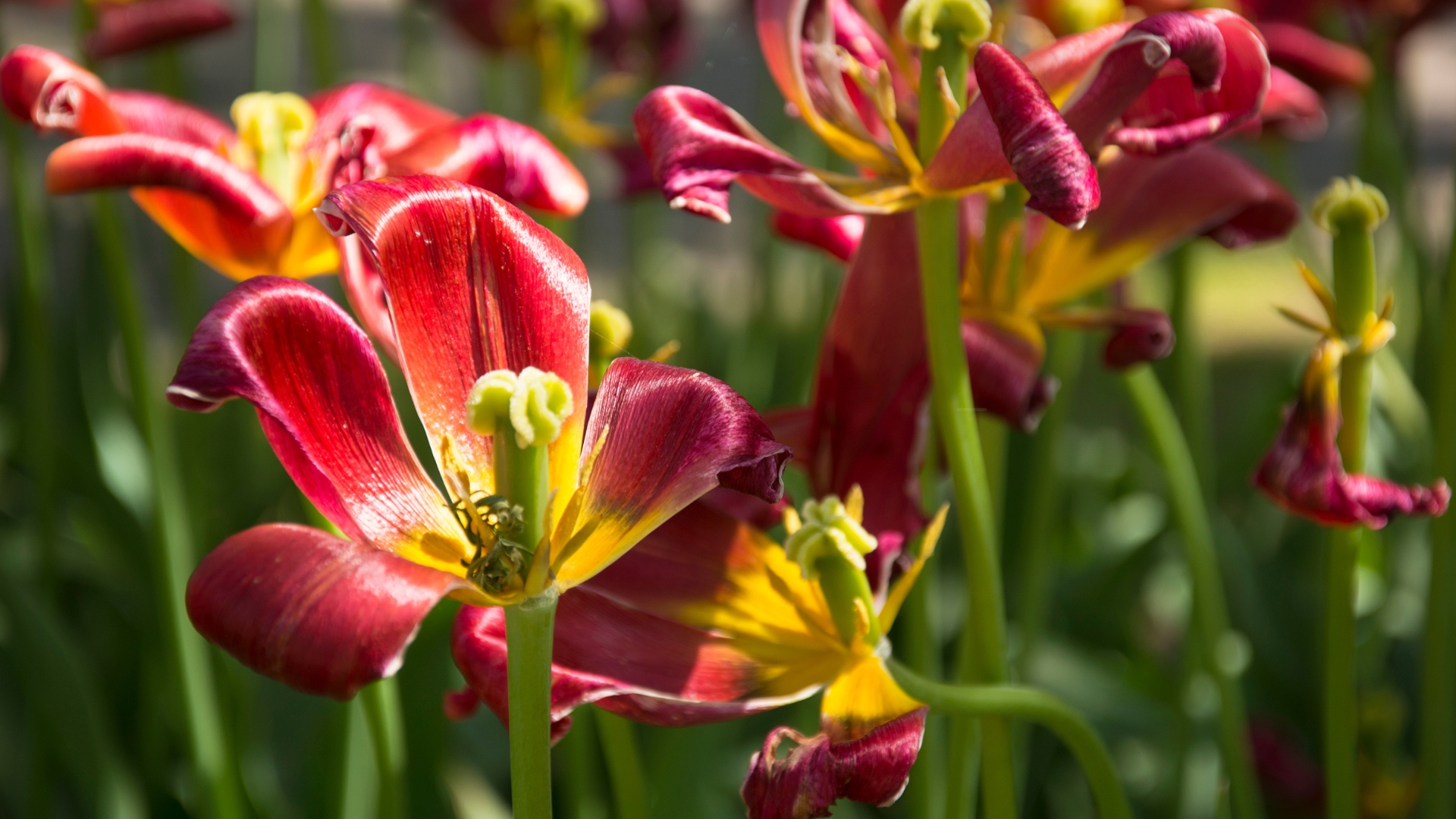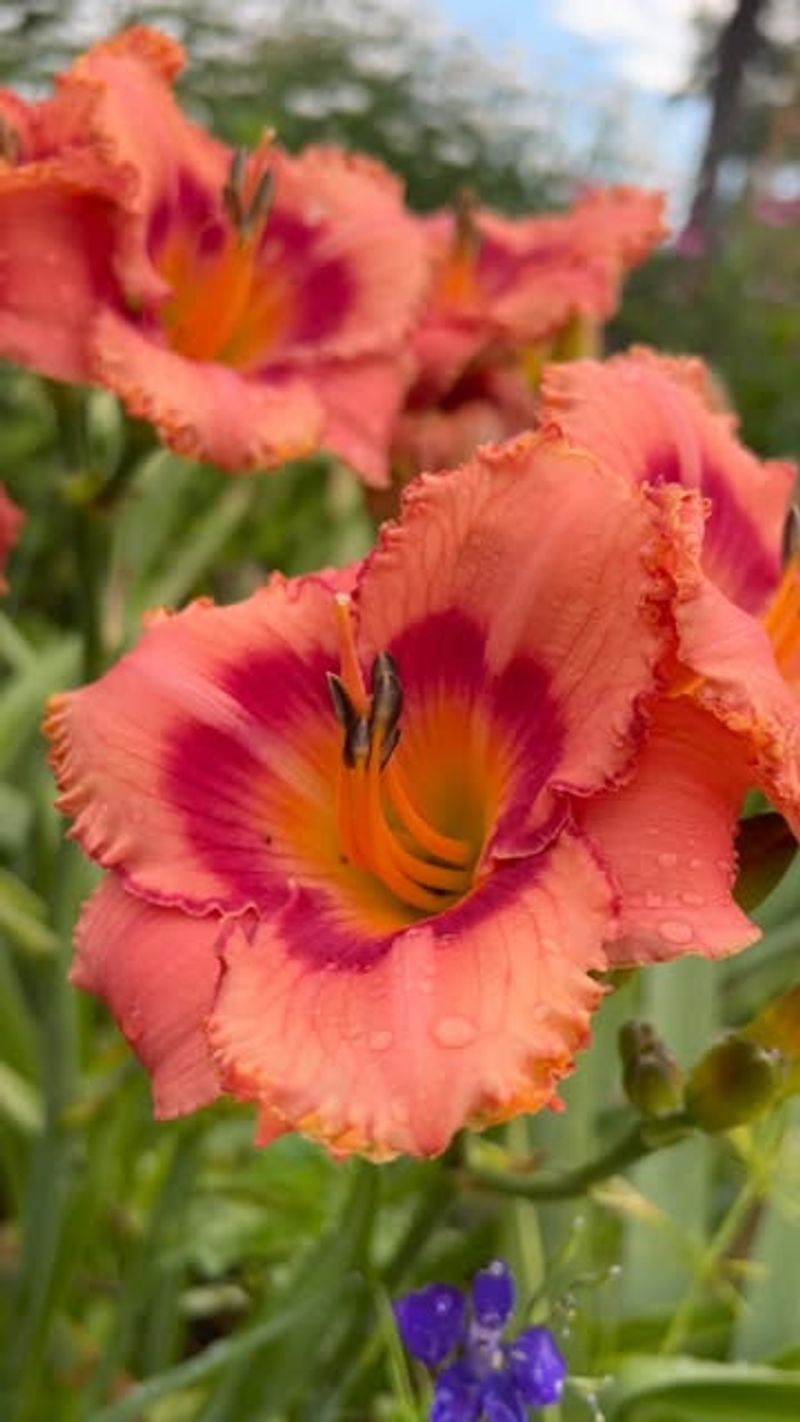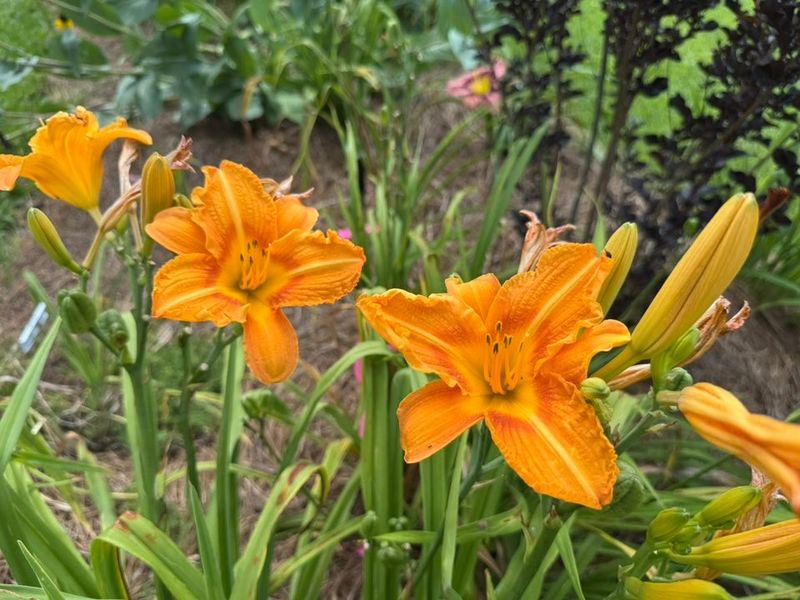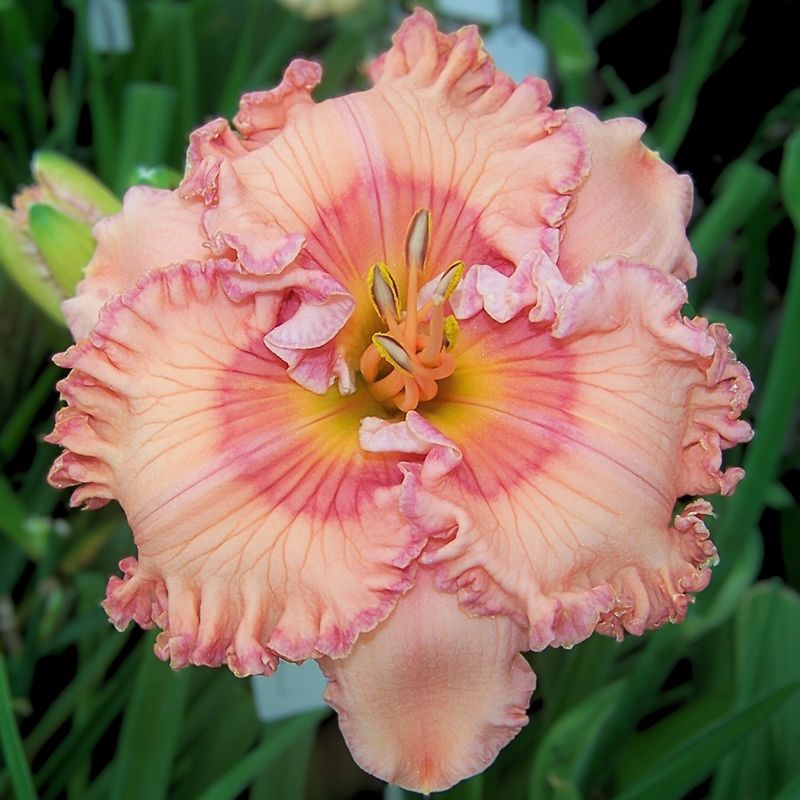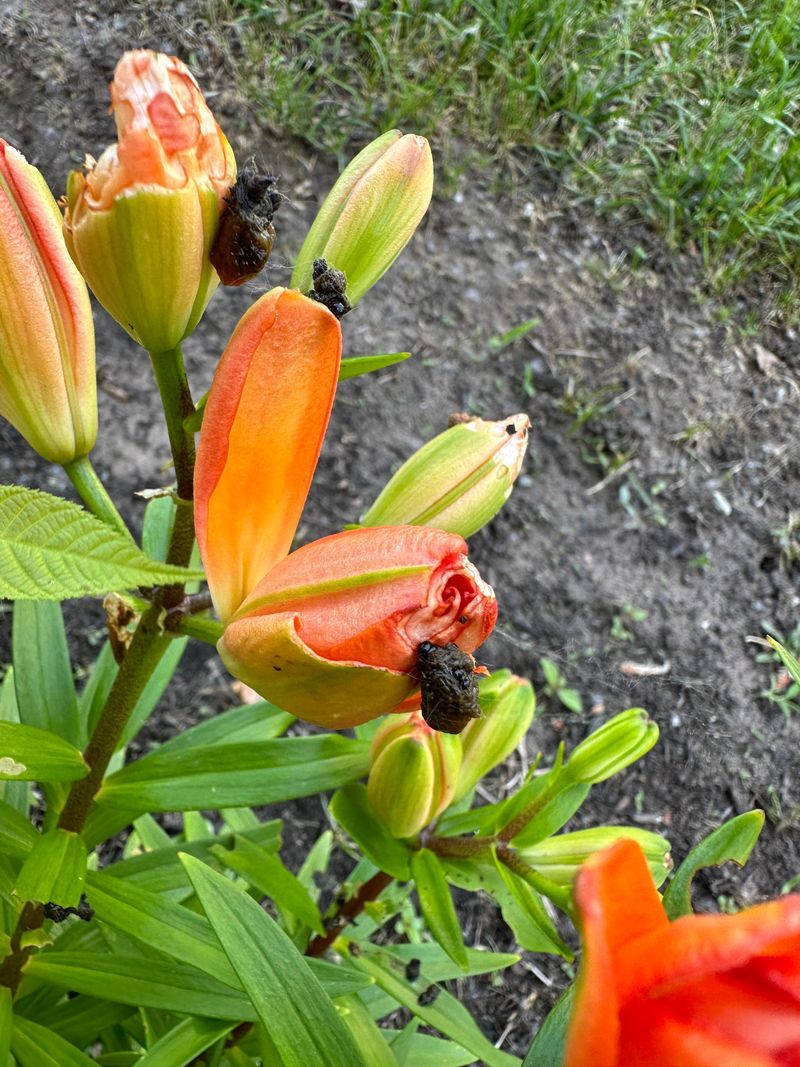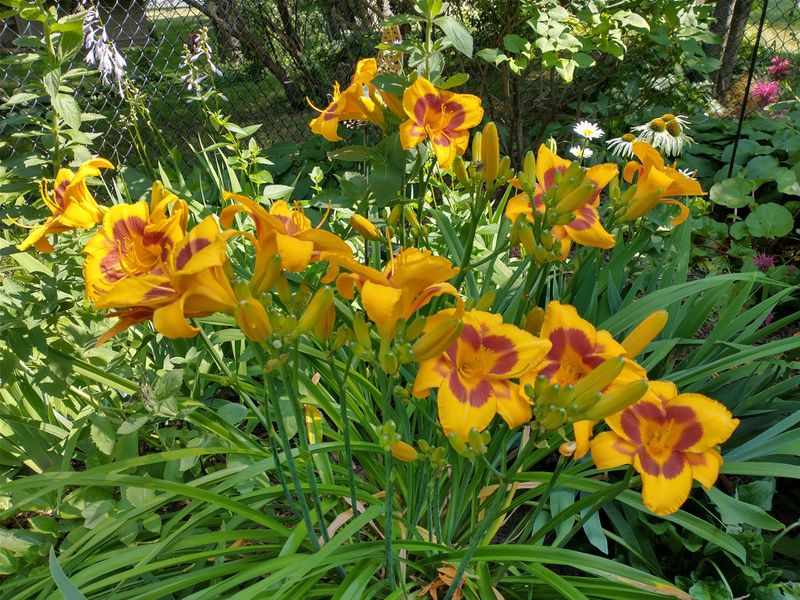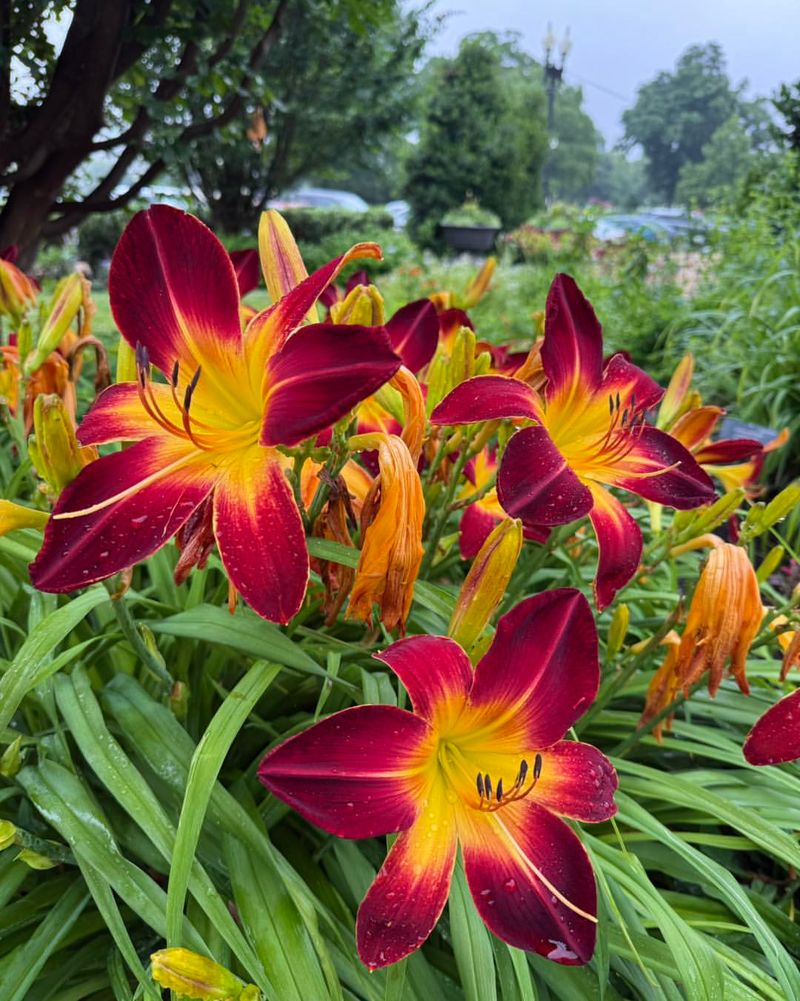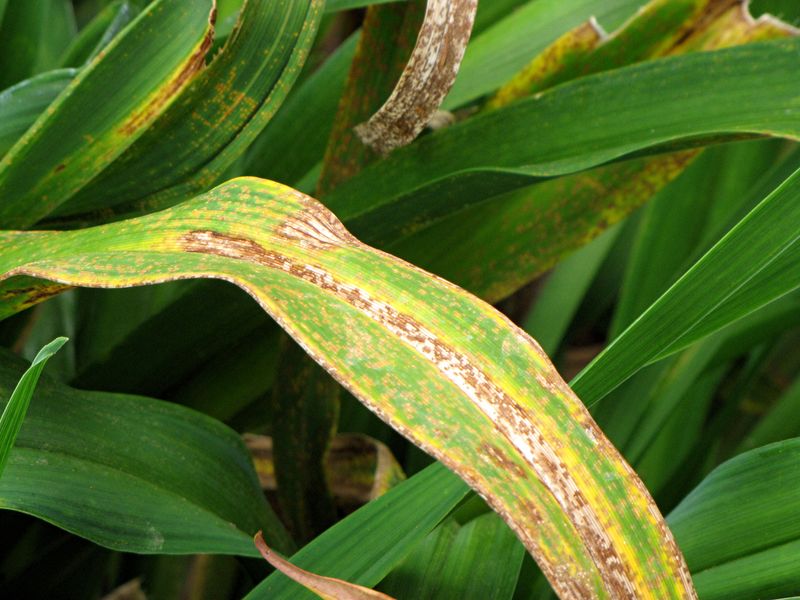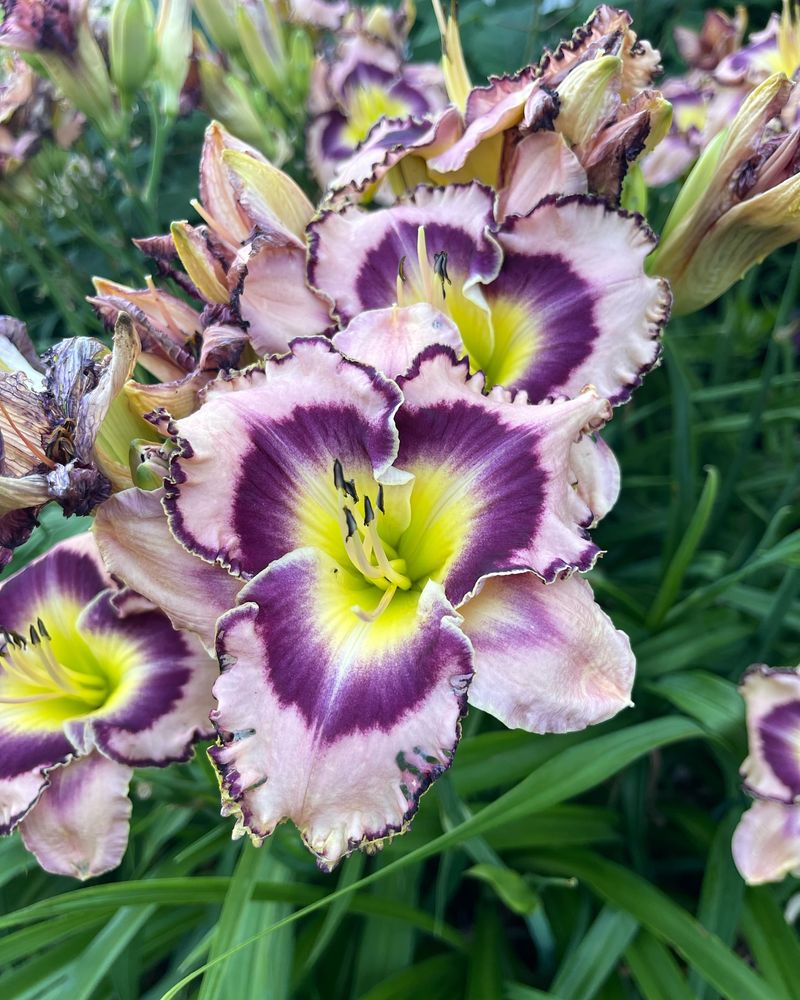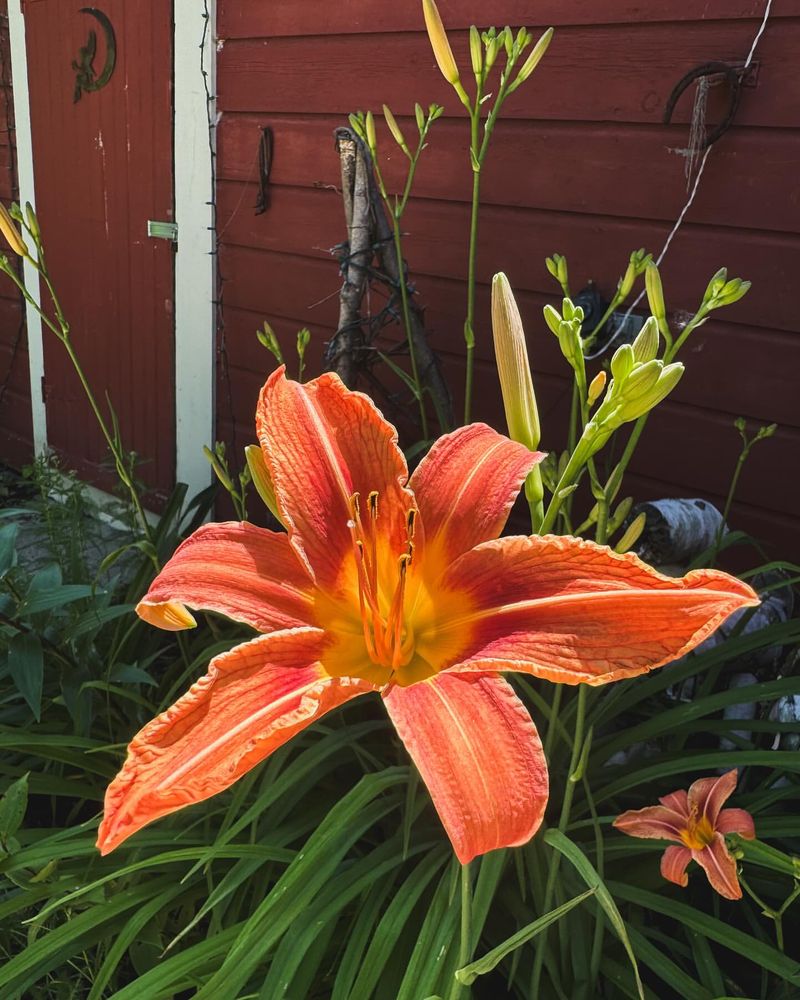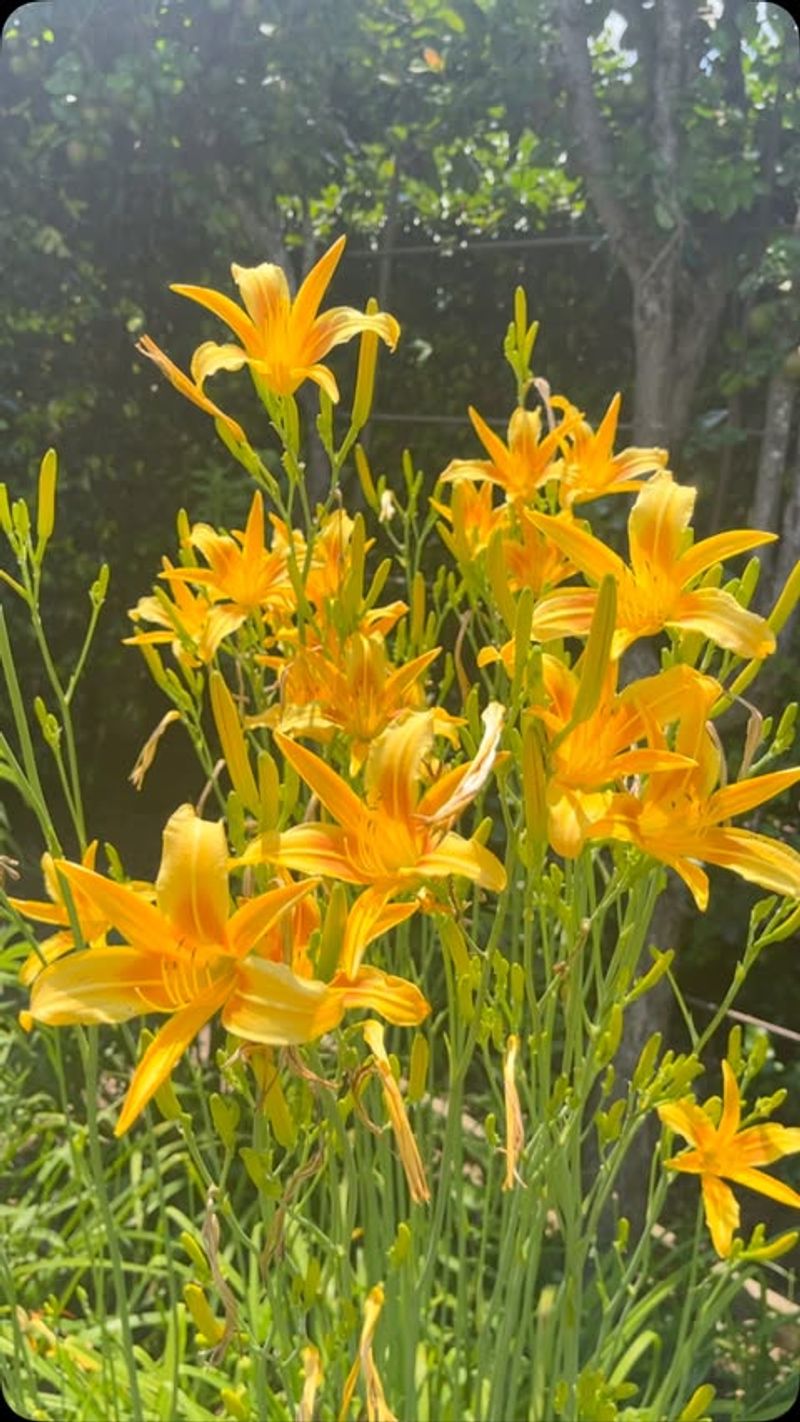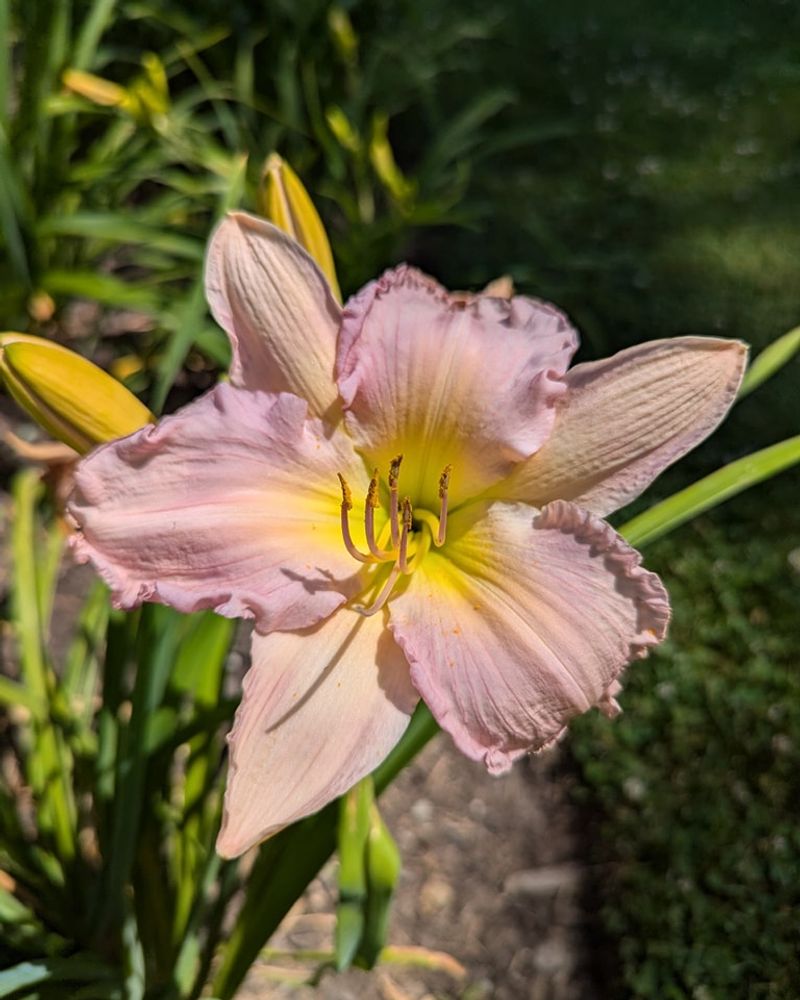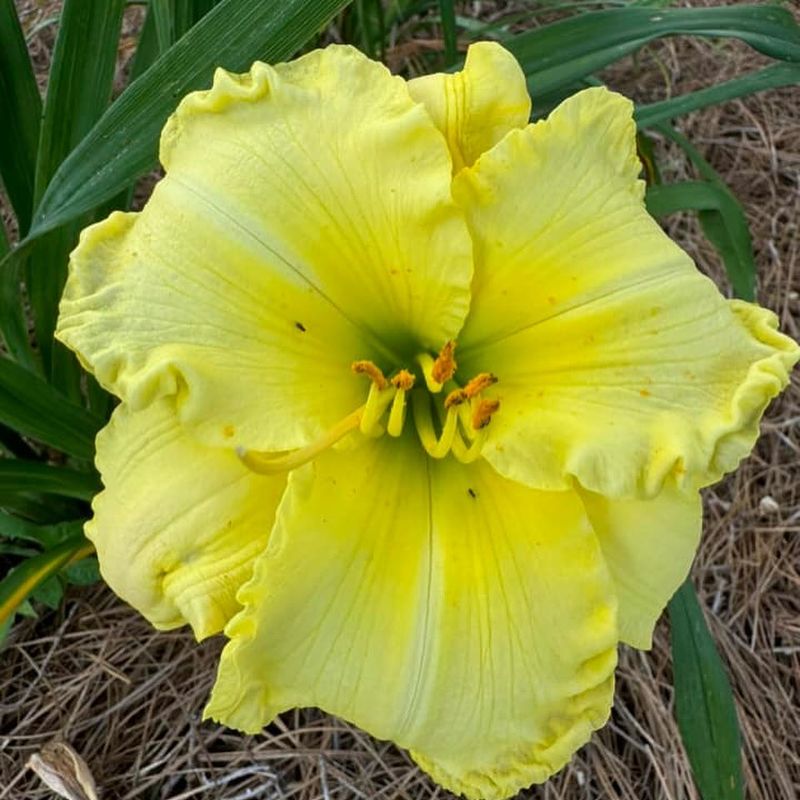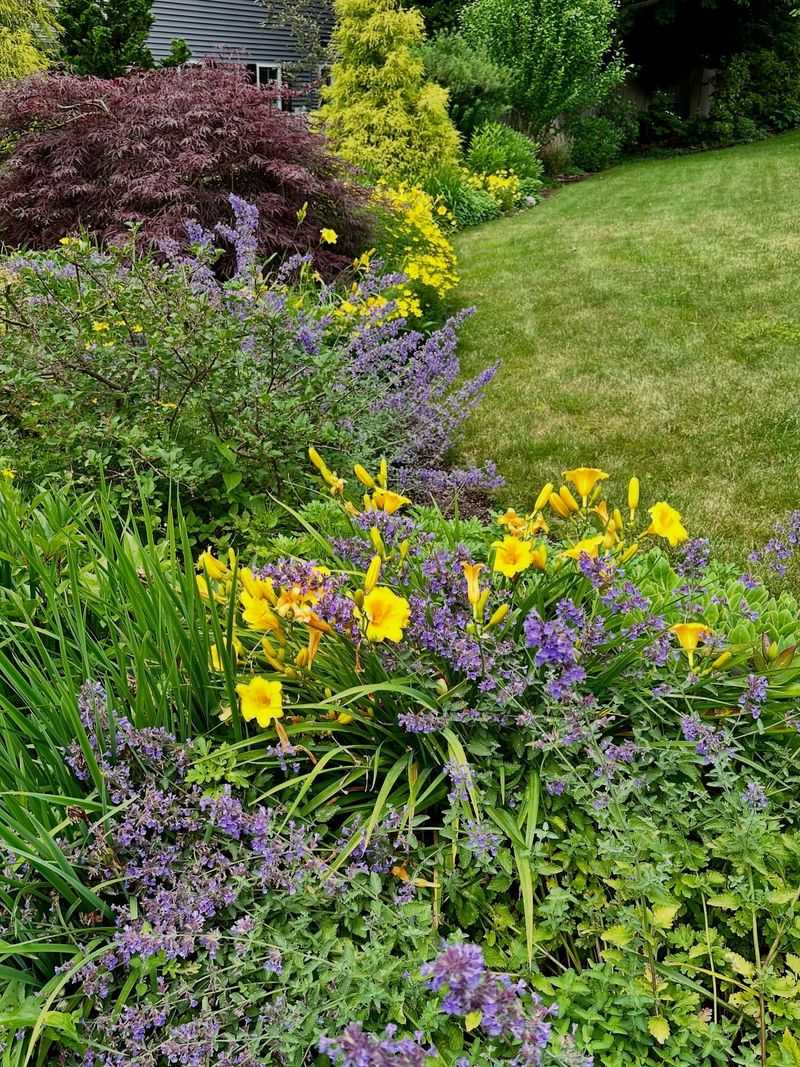July heat hits hard, and daylilies feel it too. Blooms may start to fade, leaves can droop, and the energy shifts from flower power to survival mode.
Now’s the time to refresh, tidy, and support your plants so they stay healthy and stunning through summer’s peak. These simple mid-season steps will keep your daylilies thriving and blooming strong.
1. Deep Watering Sessions
Daylilies crave consistent moisture during their blooming period. The scorching July sun can quickly dry out soil, stressing your plants when they need resources most.
Aim for deep watering 2-3 times weekly rather than frequent shallow sprinkles. Morning is ideal, allowing foliage to dry before evening and preventing fungal issues. A good soaking that reaches 6-8 inches down encourages deeper root growth and drought resistance.
2. Deadheading Spent Blooms
Remove wilted flowers daily to keep your daylily display looking fresh. Each bloom lasts just one day (hence the name), but prompt removal encourages the plant to produce more buds instead of wasting energy on seed production.
Simply pinch or snip the faded flower where it meets the stem. For reblooming varieties, this practice is especially important to trigger a second round of blooms later in summer.
3. Mulch Refreshment
A fresh layer of mulch works wonders for July daylilies. The protective barrier keeps roots cooler during intense heat and locks in precious moisture that would otherwise evaporate.
Apply 2-3 inches of organic mulch like shredded bark or compost, keeping it a few inches away from the crown to prevent rot. Bonus: mulch suppresses weeds that compete for nutrients and water during this critical growth period.
4. Fertilizer Boost
July marks a perfect time for a mid-season fertilizer application. After the initial bloom flush, daylilies benefit from additional nutrients to support continued flowering and prepare for next year.
Choose a balanced, slow-release fertilizer with equal NPK numbers or one slightly higher in phosphorus to encourage blooming. Water thoroughly after application to prevent fertilizer burn during hot weather. Avoid high-nitrogen formulas that promote excessive foliage at the expense of flowers.
5. Pest Patrol
July brings increased insect activity, with thrips, aphids, and spider mites particularly fond of daylilies. These tiny pests suck plant juices, causing distorted blooms and spotted foliage.
Examine plants weekly, checking under leaves and around buds. A strong spray of water often dislodges minor infestations. For persistent problems, insecticidal soap provides effective control without harming beneficial insects or leaving harmful residues on your flowering plants.
6. Division Planning
Overcrowded daylily clumps show decreased blooming and smaller flowers. July offers the perfect opportunity to identify which plants need division after their flowering cycle ends.
Mark crowded clumps with garden stakes now while you can easily assess their performance. Early fall provides the ideal time for actual division, giving plants time to establish before winter. Four years between divisions typically works well for most varieties.
7. Strategic Shading
Extreme July heat can fade bloom colors and shorten flowering duration. Particularly delicate varieties benefit from afternoon shade during the hottest part of the day.
Temporary shade cloth supported on stakes provides excellent protection without permanent garden changes. Focus on shading from 1-4pm when sun intensity peaks. Dark-colored blooms especially appreciate this protection, as they absorb more heat and fade faster than lighter varieties.
8. Daylily Rust Prevention
Humid July conditions create perfect conditions for daylily rust, an orange fungal disease that spreads rapidly. Prevention beats treatment every time for this troublesome condition.
Maintain good air circulation by spacing plants properly. Water at soil level rather than overhead to keep foliage dry. For gardens with previous rust issues, consider a preventative fungicide application, focusing on the undersides of leaves where spores first appear.
9. Bloom Documentation
July showcases your daylilies at their peak glory. Documenting bloom times, colors, and performance helps with future garden planning and variety selection.
Take photos of standout performers and disappointing varieties alike. Note which colors complement each other and which bloom times create continuous displays. This visual record proves invaluable when ordering new varieties or redesigning garden sections next season.
10. Scape Support Systems
Tall daylily varieties often need support to prevent flower scapes from flopping over during July storms. Unsupported stems create messy displays and can snap completely in heavy rain.
Install grow-through supports or discrete bamboo stakes before scapes reach full height. For established clumps, try circular supports that allow stems to grow naturally through the grid. Position supports so they’re hidden by foliage while providing invisible structure.
11. Slug and Snail Defense
July’s combination of moisture and heat creates ideal conditions for slugs and snails that feast on tender daylily shoots and buds. These nighttime raiders can severely damage emerging scapes before you notice their presence.
Create protective barriers using copper tape around beds or diatomaceous earth sprinkled in a ring around plants. Beer traps work well too – simply bury a shallow container with the rim at soil level and fill halfway with beer to attract and drown these persistent pests.
12. Companion Planting Assessment
July reveals which companion plants enhance your daylily display and which create problems. Ideal neighbors provide complementary colors, contrasting textures, and bloom timing that extends garden interest.
Note which companions compete too aggressively for water or nutrients, causing daylily decline. Plants like coreopsis, hardy geraniums, and ornamental grasses typically make excellent partners. Avoid aggressive spreaders like mint or certain groundcovers that might overwhelm your prized daylilies.
13. Cutting for Arrangements
Daylily blooms make stunning cut flowers when harvested correctly. Select buds that show color but haven’t fully opened – they’ll unfurl beautifully indoors and last longer than fully opened blooms.
Cut stems in early morning when hydration levels peak. Remove any foliage that would sit below water level in your vase. While individual flowers last just a day, stems with multiple buds provide changing displays as new blooms open each day.
14. Water Runoff Management
July thunderstorms can create damaging water runoff that erodes soil around daylily clumps. Exposed roots suffer drought stress even when rainfall seems adequate.
Create shallow catch basins around plants on slopes to capture water and allow proper absorption. Adding strategically placed rocks helps slow water flow during heavy downpours. For persistent problems, consider installing drip irrigation that delivers moisture directly to roots without causing erosion.
15. Seed Pod Decisions
After pollination, daylilies form seed pods that drain energy from the plant. Unless you’re specifically breeding or collecting seeds, removing these developing pods benefits overall plant health.
Snip off the entire spent flower stalk once all buds have finished blooming. For hybridizers, mark promising crosses with colorful yarn or plant tags. Remember that seedlings won’t produce exact replicas of parent plants – each seed creates a unique genetic combination.

